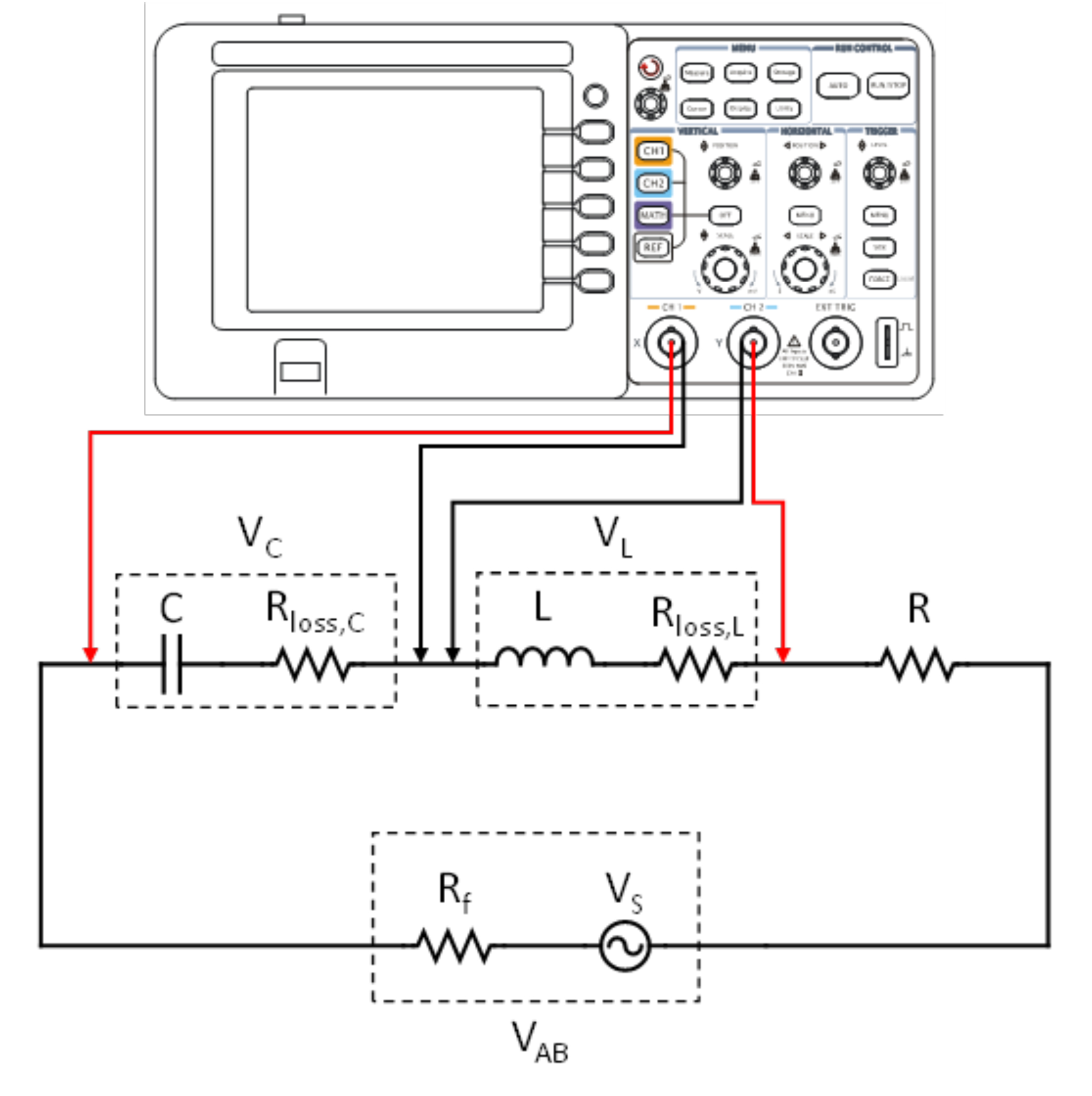การคำนวณความต้านทานสูญเสียของวงจรอนุกรม RLC ที่ไม่เป็นอุดมคติสำหรับปฏิบัติการฟิสิกส์ของนักศึกษาปริญญาตรีชั้นปี 1
Main Article Content
Abstract
Panin Poolchak, Sanong Kinkasorn, Thawatchai Nimpaya, Nontakoch Siriphongsapak, Tanin Nimsang, Wandee Onreabroy and Tula Jutarosaga
รับบทความ: 8 พฤษภาคม 2564; แก้ไขบทความ: 19 สิงหาคม 2564; ยอมรับตีพิมพ์: 23 กันยายน 2564; ตีพิมพ์ออนไลน์: 16 พฤษภาคม 2565
บทคัดย่อ
วงจรอนุกรม RLC เป็นหัวข้อที่มักใช้เป็นปฏิบัติการพื้นฐานฟิสิกส์สำหรับนักศึกษาชั้นปีที่ 1 ที่สอดคล้องหัวข้อในรายวิชาฟิสิกส์พื้นฐาน การศึกษาหาค่าความถี่เรโซแนนซ์สามารถทำได้โดยปรับค่าความถี่ของแหล่งกำเนิดไฟฟ้าที่ต่ออนุกรมอยู่กับตัวต้านทาน (R) ตัวเหนี่ยวนำ (L) และตัวเก็บประจุ (C) เมื่อเกิดการเรโซแนนซ์ในทางปฏิบัติจะพบว่าความต่างศักย์ที่ตกคร่อมตัวต้านทาน (VR) จะมีค่าไม่เท่ากับความต่างศักย์ไฟฟ้าจากแหล่งกำเนิดไฟฟ้าเนื่องมาจากความต้านทานที่สูญเสียในวงจรอนุกรม RLC ที่ไม่เป็นอุดมคติ (Rloss) ดังนั้นขณะทำการทดลองมักมีคำถามจากนักศึกษาว่า “เหตุใดเมื่อเกิดความถี่เรโซแนนซ์ขึ้น ค่าความต่างศักย์ที่ตกคร่อมที่ความต้านทาน จึงมีค่าไม่เท่ากับแรงเคลื่อนไฟฟ้าจากแหล่งกำเนิดไฟฟ้า” งานวิจัยนี้จึงได้ออกแบบการทดลองเพื่อให้นักศึกษาสามารถคำนวณความต้านทานสูญเสียโดยสร้างความสัมพันธ์เชิงเส้นระหว่างผลต่างของความต่างศักย์ไฟฟ้าของแหล่งกำเนิดไฟฟ้าและความต่างศักย์ไฟฟ้าที่ตกคร่อมตัวต้านทานกับกระแสสูงสุดในวงจร โดยอาศัยกฎของ Kirchhoff และกฎของโอห์ม และระบุความแตกต่างระหว่างเฟสของความต่างศักย์ไฟฟ้าที่ตกคร่อมตัวเก็บประจุที่ไม่เป็นอุดมคติและความต่างศักย์ไฟฟ้าที่ตกคร่อมตัวเหนี่ยวนำที่ไม่เป็นอุดมคติได้
คำสำคัญ: ความต้านทานสูญเสีย วงจรอนุกรม RLC ชุดการทดลองปฏิบัติการทางฟิสิกส์
Abstract
The RLC series circuit is one of the topics most often used as a practice in physics laboratory for first–year students. The study is often based on the adjustment of the frequency of the function generator connected in series with a resistor (R), an inductor (L) and a capacitor (C). When resonance occurs, in practice, the voltage across the resistor (VR) is not equal to the voltage difference across the generator. This is due to the loss resistance (Rloss) in a non–ideal series RLC circuit. Therefore, while conducting the experiment, there is often a question, “Why is the potential difference across the resistance not equal to the voltage difference across the generator when the resonance occurs?” Using to Kirchhoff’s law and Ohm’s law, this experiment was designed to 1) calculate the loss resistance using a linear relationship between the difference of voltage across the generator and the voltage across the resistor and the maximum current as well as 2) to determine the phase difference between the voltage across a non–ideal capacitor and the voltage across a non–ideal inductor.
Keywords: Loss resistance, RLC series circuit, Physics experiment kit
Downloads
Article Details

This work is licensed under a Creative Commons Attribution-NonCommercial 4.0 International License.
References
Department of Physics, Faculty of Science, King Mongkut’s University of Technology Thonburi (2021). General Physics Laboratory II PHY192. Bangkok: Author.
Graham, J., and Barnes, J. (1997). A laboratory experience for students of differential equations using RLC circuits. Problems, Resources, and Issues in Mathematics Undergraduate Studies 7(4): 334–340.
Ketsombun, E., and Jutarosaga, T. (2016). An alternative science kit for finding the liquid density based on Archimedes’ principle. Journal of Research Unit on Science, Technology and Environment for Learning 7(1): 204–211. (in Thai)
Mazzolini, A.P., Daniel, S., and Edwards, T. (2012). Using interactive lecture demon-strations to improve conceptual understanding of resonance in an electronics course. Australasian Journal of Engineering Education 18(1): 69–88.
Office of the Permanent Secretary MHESI (2011). The Quality Standard for Curriculum in Bachelor’s Degree of Science and Mathematics 2011, Retrieved from http://www.mua.go.th/users/tqf-hed/news/ FilesNews/FilesNews6/scienceMath_R. pdf, April 25, 2021. (in Thai)
Rigol (2010). User’s Guide Rigol DS100E DS100D Series Digital Oscilloscopes, Retrieved from https://cdn-shop.adafruit. com/datasheets/Users+Guide+DS1000E.pdf, April 25, 2021.
Saowsupa, S. (2016). Simple experimental set for measuring Suga solution concentration with refractive index of light. Journal of Research Unit on Science, Technology and Environment for Learning 7(2): 339–349. (in Thai)
Sokol, P. E., Warren, G., Zheng, B., and Smith, P. (2013). A circuit to demonstrate phase relationships in RLC circuits. Physics Education 48(3): 312–316.
Tlaczala, W., Zaremba, M. Zagorski, A., and Gorghiu, G. (2009). Research virtual physics laboratory for distance learning developed in the frame of the VccSSe European project. The Fifth International Conference on Multimedia & ICT's in Educ-ation (pp. 467–471.). Lisbon, Portugal.
Yaemsanguansak, P., and Jutarosaga T. (2017). An experiment on liquid film motor. Journal of Research Unit on Science, Technology and Environment for Learning 8(2): 408–420. (in Thai)
